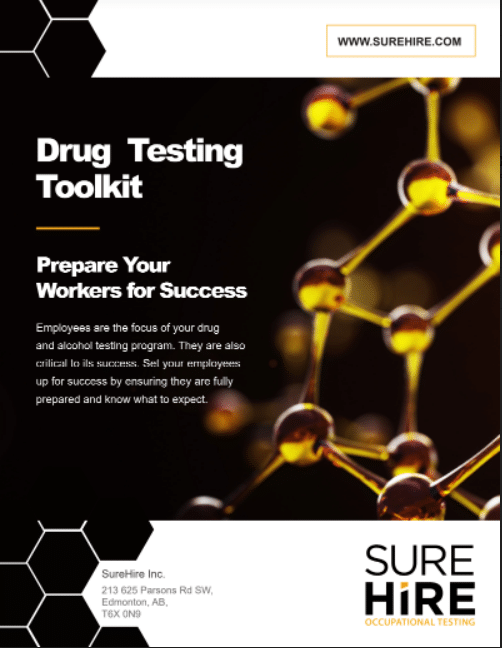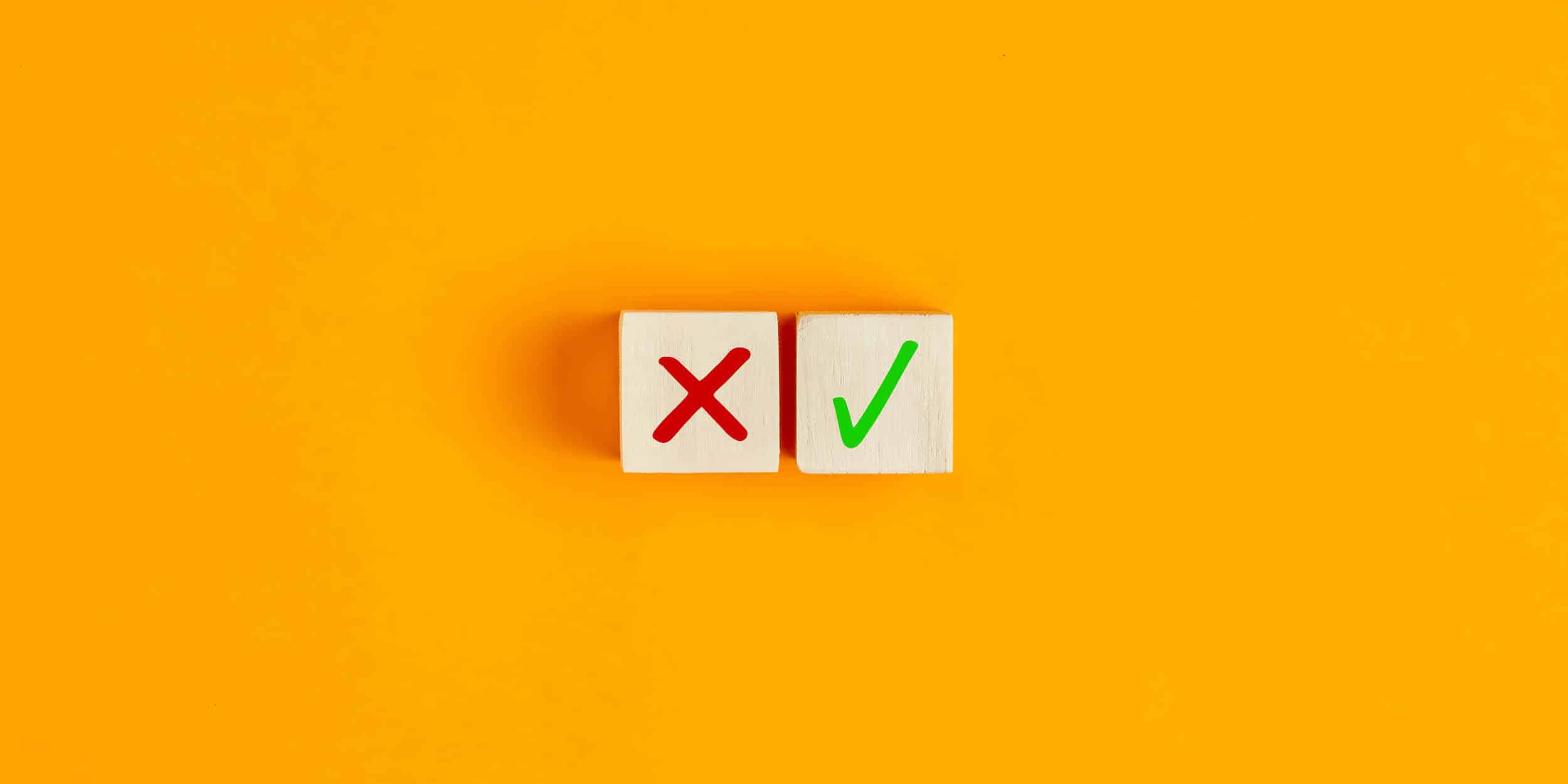TAKEAWAY: A non-negative specimen is not the same as a positive specimen. A drug test result is categorized as positive if testing indicates the presence of a targeted drug or its metabolite at a level above the minimum cut-off. However, a non-negative specimen also does not clearly indicate that the test subject has not used prohibited drugs.
Jump Ahead
A non-negative result is a collective term that essentially refers to any test that is not negative. In other words, the test cannot accurately determine that no drugs are present in the testing subject’s urine, hair, or oral fluid sample. For example, because laboratory tests must confirm positive POCT tests, they cannot be considered positive. Instead, they are called non-negative.
What non-negative tests are not, at least initially, is positive. The term implies that the results are inconclusive or that an additional confirmation test is required.

Contact Us Today!
We can help ensure that your policy is implemented to fit your company’s needs and culture. Choose from test panels ranging from 5 to 13, POCT and laboratory testing, substance abuse professional services, online and in-person education and training, and benefit from SureHire’s extensive partnerships and advanced technologies. Learn more.
What is the difference between non-negative and positive drug tests?
While a non-negative test could be positive, it is not necessarily positive. While a positive test result proves the presence of a specific drug at levels that exceed allowable limits, a non-negative test merely proves that traces of a particular drug were present in the sample. Non-negative tests always require a second confirmation test unless a medical review officer (MRO) deems otherwise, however, a positive test can sometimes require a confirmation test. These confirmation tests are always lab-based and involve a second test of the same specimen.
Put simply, a non-negative test is one that is not definitively negative. There are several reasons why this could occur. The sample could be adulterated, substituted, invalid or positive, but further testing needs to happen to make a final determination.
A positive test shows that the sample exceeded allowable limits, known as cut-off levels, for a specific drug. Cut-off levels vary according to the drug tested and the type of test – urine, hair, or oral fluid – used. If a rapid test was employed, the results are confirmed with a second lab test. While most employers in Canada can establish their cut-off levels, the Canadian Model does provide suggested cut-off levels. Employers governed by the U.S. Department of Transportation (DOT) must follow the DOT guidelines for cut-off levels.
What does positive mean on a drug test?
If a drug test is deemed positive, that means that the detected levels of a drug exceeded the prescribed cut-off levels for that specific drug. However, it is essential to note that the Canadian Model and general best practices for drug testing recommend that employers forward positive results through an MRO.
What happens to a worker following a positive drug test depends on the company’s drug and alcohol policy. This policy should communicate the reasons for testing and the processes and consequences that follow a negative result.
Many provinces and territories also have legislation covering the allowable consequences of a positive drug test. In most cases, these are contained in human rights legislation. For example, if the positive drug test results from an addiction, the employee may have the right to be accommodated under most provincial and territorial human rights legislation. However, courts can supersede this right if an employer demonstrates that it will cause them undue hardship.
What does a negative on a drug test mean?
A negative drug test result means that testing did not detect the presence of a targeted drug or its metabolites in a particular sample. Negative drug tests are also referred to as negative results.
To qualify as a negative result, the test specimen must contain either none of the targeted drug or its metabolites or a concentration level less than the minimum threshold amount for that drug, also known as the cut-off level.
With a negative test result, no additional actions need to be taken by the employer or the employee, and the employee can carry on with their usual work assignments.
What happens after someone receives a non-negative result?
It is critical to understand that a non-negative test does not imply that the test was either negative or positive. Think of it as inconclusive. What happens following a non-negative drug test result depends on the employer’s drug and alcohol policy and whether or not the employer follows the Canadian Mode or DOT. In most cases, a non-negative test will suspend worker duties, particularly anything safety-sensitive, until confirmation testing results are available. Labs generally complete confirmation testing fairly quickly for non-negative tests (typically 3-5 business days).
The Canadian Model requires that an MRO review all non-negative test results. The MRO will then determine whether the test is positive, negative, or negative with a safety advisory. A safety advisory could include a recommendation that an employee is not permitted to perform specific tasks. The MRO will provide a copy of these determinations and any applicable recommendations to the employer and the employee.
How SureHire Can Help Protect Your Workplace
A comprehensive workplace drug and alcohol policy is an employer’s best defense against the risks associated with drug and alcohol use in the workplace. It should clearly outline testing procedures, processes, and consequences.

You May Also Be Interested In…
- Do You Have Reasonable Suspicion?
 Employers cannot initiate reasonable suspicion testing without first going through the 5-step process. Reasonable suspicion training provides critical information about how to initiate reasonable suspicion testing, including the 5-step process and other tools that employers can use to help manage the misuse of alcohol and drugs in the workplace.
Employers cannot initiate reasonable suspicion testing without first going through the 5-step process. Reasonable suspicion training provides critical information about how to initiate reasonable suspicion testing, including the 5-step process and other tools that employers can use to help manage the misuse of alcohol and drugs in the workplace. - An Employer’s Guide: What You and Your Employees Need to Know About DOT Drug & Alcohol Testing
 When implementing or maintaining DOT Drug & Alcohol testing, there are key areas that employers should consider.
When implementing or maintaining DOT Drug & Alcohol testing, there are key areas that employers should consider. - SureHire Occupational Testing Acquires COHR Health: A Positive Step Towards Safe, Healthy, Productive Workforces and Communities
 We are thrilled to announce that today, May 6, 2024, SureHire Occupational Testing has officially acquired COHR Health, a well-known leader in occupational health services. Read on…
We are thrilled to announce that today, May 6, 2024, SureHire Occupational Testing has officially acquired COHR Health, a well-known leader in occupational health services. Read on… - Occupational Testing Use Case – Mining
 In this case study, we will explore how mining companies can use various types of occupational tests to reduce Total Recordable Incident Rates (TRIR) long term.
In this case study, we will explore how mining companies can use various types of occupational tests to reduce Total Recordable Incident Rates (TRIR) long term. - 9 Strategies to Keep Workers Cool on Drilling Sites During Hot Summer Months
 This article delves into strategies to keep workers cool and safe on drilling sites during the hot summer months.
This article delves into strategies to keep workers cool and safe on drilling sites during the hot summer months. - Hearing Conservation Basics: How to Manage Occupational Noise
 Learn how to proactively mitigate occupational noise risks and help prevent NIHL among workers.
Learn how to proactively mitigate occupational noise risks and help prevent NIHL among workers.

